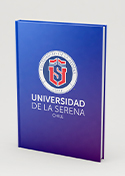Effect of Rigor Stage and Pressurisation on Lipid Damage, Total Volatile Amine Formation and Autolysis Development in Palm Ruff Stored on Ice

Date
2023/02/01
Journal Title
Journal ISSN
Volume Title
Publisher
MDPI
Abstract
The effect of the rigor stage (pre or post) and previous high-pressure processing (HPP
450 and 550 MPa for 3 min) was checked during the storage on ice of farmed palm ruff (Seriolella violacea). Fish processed in pre-rigor conditions led to higher and lower levels (p < 0.05) of moisture and lipid contents in chilled fish, respectively, when compared to their counterpart samples processed in the post-rigor stage. Pre-rigor fish showed a higher (p < 0.05) quality level than post-rigor samples according to the assessment of the K value (59.0-92.1 and 70.3-96.3 ranges, respectively), fluorescent compounds (0.29-1.11 and 0.37-1.90 ranges, respectively), free fatty acids (FFA) (15.1-188.0 and 33.8-232.5 g center dot kg(-1) lipids ranges, respectively), and total volatile amines (216.3-387.6 and 217.7-412.2 g center dot kg(-1) muscle ranges, respectively). Pressure-treated fish showed higher (p < 0.05) quality retention than non-treated samples according to the formation of fluorescent compounds (0.29-0.86 and 0.85-1.90 ranges, respectively), FFA (15.1-50.6 and 58.9-223.5 g center dot kg(-1) lipids ranges, respectively), and total volatile amines (216.3-250.3 and 351.1-412.2 g center dot kg(-1) muscle ranges, respectively) and the evolution of the K value (59.0-77.2 and 86.9-96.3 ranges, respectively). The use of pre-rigor fish and previous HPP is recommended for the commercialisation of the current species as a fresh product.
450 and 550 MPa for 3 min) was checked during the storage on ice of farmed palm ruff (Seriolella violacea). Fish processed in pre-rigor conditions led to higher and lower levels (p < 0.05) of moisture and lipid contents in chilled fish, respectively, when compared to their counterpart samples processed in the post-rigor stage. Pre-rigor fish showed a higher (p < 0.05) quality level than post-rigor samples according to the assessment of the K value (59.0-92.1 and 70.3-96.3 ranges, respectively), fluorescent compounds (0.29-1.11 and 0.37-1.90 ranges, respectively), free fatty acids (FFA) (15.1-188.0 and 33.8-232.5 g center dot kg(-1) lipids ranges, respectively), and total volatile amines (216.3-387.6 and 217.7-412.2 g center dot kg(-1) muscle ranges, respectively). Pressure-treated fish showed higher (p < 0.05) quality retention than non-treated samples according to the formation of fluorescent compounds (0.29-0.86 and 0.85-1.90 ranges, respectively), FFA (15.1-50.6 and 58.9-223.5 g center dot kg(-1) lipids ranges, respectively), and total volatile amines (216.3-250.3 and 351.1-412.2 g center dot kg(-1) muscle ranges, respectively) and the evolution of the K value (59.0-77.2 and 86.9-96.3 ranges, respectively). The use of pre-rigor fish and previous HPP is recommended for the commercialisation of the current species as a fresh product.
Description
Keywords
HIGH-PRESSURE TREATMENT, SERIOLELLA-VIOLACEA, K-VALUE, QUALITY CHANGES, FISH MUSCLE, PRE-RIGOR, STORAGE, OXIDATION, TEMPERATURES, FILLET